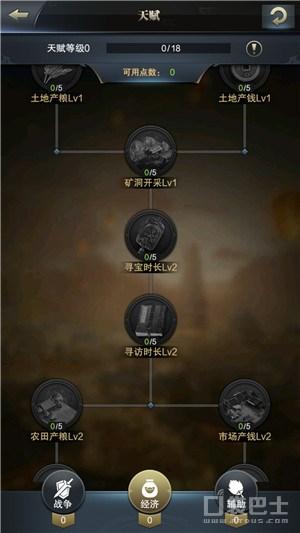龙腾网评价希腊(印尼华人致力于保护拥有七百年历史拉森人称)
Chinese Indonesians work to preserve 700 years of history in Lasem, a ‘Little China’ in Central Java
印尼华人致力于保护拥有七百年历史的拉森( Lasem),它位于爪哇中部,被称为“小中国”。
There was already a thriving Chinese community in Lasem when a captain of Chinese Admiral Zheng He arrived in 1413, and families still own homes built generations ago. As the young move away, preserving them becomes an urgent task
1413年,中国海军上将郑和(音译)的一位上尉抵达拉森时,已经有了一个繁荣的华人社区。这些家族现在仍然拥有以前的人建造的房子。随着年轻人的不断离开,保护他们成为了一项紧迫的任务。

Frida Listiyani has remained in the house she shared with her husband, a ninth-generation Chinese Indonesian, since he died at the age of 74 a few years ago. She still prays for him and his ancestors at the altar in the home.
弗里达 利斯提亚尼(Frida Listiyani)几年前去世,享年74岁,至今仍住在她和丈夫(一位第九代华裔印度尼西亚人)共有的房子里。她还在家里的祭坛上为他和他的祖先祈祷。
On every first and 15th day of each lunar month, she presents an offering of oranges to the Kitchen God. On the veranda hang portraits of her husband’s forebears, including his great-grandparents. She’s not sure which part of China they came from, but Frida – also known by her Chinese name, Tan Bwan Nio – says the house in Lasem, Central Java, remains more or less structurally unchanged since it was built by the first generation of her late husband’s family.
每个农历月的第一天和第十五天,她都会向灶神献上桔子。阳台上挂着她丈夫的祖先的肖像,包括他的曾祖父母。她不确定他们来自中国的哪个地区,但弗里达(Frida)——她的中文名字也很有名,Tan Bwan Nio说,位于爪哇岛中部的Lasem市的房子在结构上几乎没有变化,因为它是由她已故丈夫的家族第一代建造的。

Frida Listiyani prays for her late husband's ancestors at this altar in the home she shared with her late husband. Photo: Valerian Timothy
弗里达·李斯蒂亚尼在她与已故丈夫共有的家中的祭坛上向已故丈夫的祖先祈祷。照片:瓦莱里安·蒂莫西
Lasem, a subdistrict about three hours’ drive from Semarang, the provincial capital of Central Java, was one of the earliest Chinese settlements on Java, Indonesia’s most populous island, and the many old homes and temples there serve as a reminder of its history.
拉森( Lasem)离三宝垄大约三个小时的车程,位于爪哇中部省会,是华人最早的爪哇定居点之一,印度尼西亚人口最多的岛屿,以及那里的许多老房子和寺庙,都能让人联想起它的历史。

Lasem resident Frida Listiyani – also known by her Chinese name, Tan Bwan Nio. Photo: Valerian Timothy
拉森的居民弗里达·利斯蒂亚尼——她的中文名字,谭·婉丽也很有名。照片:瓦莱里安·蒂莫西

Afnantio Soesantio – born Tio Sian Gwan – says his great-grandfather arrived in Lasem from Xiamen, a city in Fujian, in the 1800s. A seventh-generation Chinese-Indonesian, he stays connected with his roots by following his ancestors’ traditional rituals.
Afnantio Soesantio出生的Tio Sian Gwan说 - 他的曾祖父于19世纪从福建的厦门抵达拉森。作为第七代印尼华人,他通过追随祖先的传统仪式与他的根源保持联系。

Afnantio Soesantio, also known as Tio Sian Gwan, a seventh-generation Chinese Indonesian who says his great-grandfather arrived in Lasem from Xiamen, in Fujian province, China in the 1800s. Photo: Valerian Timothy
Afnantio Soesantio,又称Tio Sian Gwan,是第七代印尼华人,他说他的曾祖父于19世纪从中国福建省的厦门抵达拉森。照片:Valerian Timothy

The early Chinese traders in the area acquired rice for export back to China, while they brought with them clothing and textiles in exchange. Many of the Chinese became permanent settlers, remaining as traders or acquiring land and becoming farmers.
该地区早期的中国贸易商购买大米,然后将大米出口回中国,与此同时,他们还带来了服装和纺织品作为交换。许多中国人成为了永久的定居者,留下来当商人或是获得土地并成为农民。

A painting of the ship of 15th century Chinese Admiral Zheng He on the wall of a temple in Penang, Malaysia. Photo: Alamy
马来西亚槟榔屿一座寺庙的墙上,画着15世纪中国海军上将郑和的船。照片:Alamy

On the graves’ headstones, Agni found the names of a number of villages from as far north as Anhui, Henan, Hunan, Shanxi, and Shandong. (The oldest headstone she found was dated 1768.)
在墓碑上,阿格尼发现了一些乡镇的名字,这些村庄从北方一直延伸到安徽、河南、湖南、山西和山东。(她发现的最古老的墓石是1768年的)。

An ancestor of Frida Listiyani's husband, one of several that hang on the veranda of the house her late husband’s ancestors built in Lasem. Photo: Valerian Timothy
弗里达·利斯蒂亚尼的丈夫的祖先,挂在阳台上的,是她已故丈夫的祖先,是在拉森建造的房子的几个人之一。照片:瓦莱里安·蒂莫西(Valerian Timothy)

Renny says the Lasem batik motifs and dyeing techniques date back generations and maintain a cross-cultural uniqueness. According to some historical accounts, it was Captain Bi’s wife who pioneered the Lasem batik style, traditionally characterised by the predominant use of a blood-red colouring agent.
Renny说,拉森蜡染(Lasem batik)图案和染色技术可以追溯到几代人并保持跨文化的独特性。根据一些历史记载,毕9Bi)船长的妻子开创了拉森蜡染风格,其传统特征是主要使用血红色着色剂。

A motif of a young Chinese girl in a Lasem-style batik sewn by Priscilla Renny, whose family has been in the batik trade for five generations. The cloth she makes is a distinct blend of Chinese and Javanese styles. Photo: Valerian Timothy
Priscilla Renny缝制的拉森风格蜡染中的一个年轻中国女孩的主题,他的家人已经进行了五代蜡染贸易。她制作的布料是中国和爪哇风格的完美结合。照片:Valerian Timothy
One of the batiks made by Renny features the motif of a young Chinese girl, symbolising long life, and is complemented by traditional Javanese patterns. Other Chinese motifs include dragons and flowers.
Renny制作的其中一个蜡染画以中国年轻女孩的主题为特色,象征着长寿,并辅以传统的爪哇图案。其他中国图案包括龙和花。
Renny’s work is highly valued because of the complexity of the patterns she creates, and a piece of her batik cloth sells for between 4 million and 25 million Indonesian rupiah (US$280 and US$1,770) depending on the size. She and her 30 co-workers produce at least 80 batik pieces a month, she says.
Renny的作品因其所创造的图案的复杂性而受到高度重视,她的一块蜡染布售价在400万至2500万印尼卢比(280美元至1770美元)之间,具体取决于尺寸。她说,她和30名同事每月至少生产80件蜡染布。
“I will keep safeguarding the preservation of Lasem batik, while also trying to make it popular with the younger generation,” Renny says.
雷尼说:“我将继续传承和保护拉森蜡染,同时也努力使它受到年轻一代的欢迎。”

Old houses like this survive in Lasem because families who have moved away are reluctant to relinquish them, and employ older women as housekeepers to look after them. Photo: Valerian Timothy
像这样的老房子在拉森能存活下来,是因为那些已经搬走的家庭不愿放弃它们,并雇用年长的妇女作为管家来照顾它们。照片:瓦莱里安·蒂莫西(Valerian Timothy)
Baskoro Pop, a member of the Discover Lasem community that promotes heritage preservation and utilisation in Lasem, says there is growing awareness of the need to preserve Lasem’s history. A few years ago, some residents suggested Lasem apply for Unesco World Heritage status. Baskoro sees signs of hope that Lasem’s heritage can be preserved.
Baskoro Pop是Discover Lasem社的成员,该社团致力于促进Lasem的遗产保护和利用,他表示人们越来越意识到需要保护Lasem的历史。几年前,一些居民建议拉森申请联合国教科文组织世界遗产地位。Baskoro看到了希望Lasem的遗产得以保存的迹象。
“The spirit of preservation is one of collective awareness,” says Baskoro, who has been guiding tours of Lasem since 2012. “Preservation activities have been going on in Lasem for a long time, but it is being done unconsciously.”
“保护精神是一种集体意识,”Baskoro说,他自2012年以来一直在指导保护拉森行动。“保存活动在拉斯姆已经进行了很长时间,但它是自发的行为。”

Baskoro Pop of the Discover Lasem community that promotes heritage preservation. Photo: Valerian Timothy
探索Lasem社区的Baskoro Pop,促进遗产保护。照片:Valerian Timothy
When a house is left empty following the death of its occupant, the younger generation who have moved to cities in search of better opportunities may still be reluctant to abandon the ancestral home. In such cases an older woman is often employed as a housekeeper to take care of the property. She is therefore playing a role in the house’s preservation, and such situations have become common in Lasem, Baskoro says.
当一个房屋在其居住者死亡后留空时,为了寻找更好的机会而搬到城市的年轻一代可能仍然不愿意放弃祖先的家。在这种情况下,老年妇女经常被雇佣作为管家来照顾财产。因此,她正在房子的保护中发挥作用,这种情况在拉森已经很普遍,Baskoro说。

The entrance to the Roemah Oei, or Oei House, the ancestral home of seventh-generation Chinese Indonesian Grace W. Susanto – also known as Oei Lee Giok – in Lasem. Photo: Grace W. Susanto
Roemah Oei或Oei House的入口,是第七代印尼华人Grace W. Susanto(也称为Oei Lee Giok)的祖屋,位于Lasem。照片:Grace W. Susanto
Like Renny, not everyone wants to leave the old home behind. Grace W. Susanto – a seventh-generation Chinese Indonesian also known as Oei Lee Giok – wants to preserve her family home, Roemah Oei (Oei House), as a heritage site. The original owner, Oei Am, was born in China in 1798 and arrived in Lasem at the age of 15. He later married a local woman.
像Renny一样,并不是每个人都想离开老房子。Grace W. Susanto--第七代中国印尼人,也被称为Oei Lee Giok--希望保留她的家,Roemah Oei(Oei House)作为遗产。原主人Oei Am于1798年出生于中国,15岁时抵达拉森。他后来娶了当地一名女子。
Built in 1818, the house had been left in the hands of housekeepers for many decades before Susanto inherited it from her mother around the turn of the millennium. She says Oei Am probably has about 500 direct descendants, though many have left Indonesia for Hong Kong, Australia, the United States and Europe.
这座房子建于1818年,几十年后一直留在管家手中,之后Susanto在千禧年之际从母亲那里继承了它。她说Oei Am可能有大约500名直系后裔,尽管许多人已离开印度尼西亚前往香港,澳大利亚,美国和欧洲。

Grace W. Susanto, known as Oei Lee Giok, owns the Roemah Oei built by her ancestor Oei Am, who was born in China in 1798, arrived in Lasem at the age of 15 and later married a local woman. Photo: Valerian Timothy
Grace W. Susanto,名为Oei Lee Giok,拥有由她的祖先Oei Am建造的Roemah Oei,他于1798年出生于中国,15岁时抵达Lasem,后来与当地一名女子结婚。照片:Valerian Timothy

Agni says there are very few of the younger generation of Chinese Indonesians from the old Lasem families left in the area.
Agni说,其中来自该地区的拉森老家族的年轻一代印尼华裔人已经很少了。

A family photo of Grace W. Susanto's grandparents. Photo: courtesy of Grace W. Susanto
Grace W. Susanto的祖父母的全家福照片。照片:由Grace W. Susanto提供

“I think the people themselves have to grapple with the preservation of their traditions and customs,” Agni says. “We must remain steadfast in following our traditions as diligently as possible. That’s just how it is. You have to make it happen.”
阿格尼说:“我认为人们自己必须努力保护自己的传统和习俗。”“我们必须坚定不移地尽可能地遵守我们的传统。就这样。并一定要说道做到。”

Getting there
(怎么去那里)
Cathay Pacific and Garuda Indonesia fly between Hong Kong and Jakarta daily. From Jakarta, several Indonesian airlines fly to Semarang’s Ahmad Yani International Airport, from where a private car can be hired for about 700,000 rupiah one way.
国泰航空公司和印尼鹰航航空航班每天在香港和雅加达之间飞行。从雅加达,几家印尼航空公司飞往三宝垄的艾哈迈德雅尼国际机场,从那里可以租一辆私家车,单程收费约700,000卢比。
,免责声明:本文仅代表文章作者的个人观点,与本站无关。其原创性、真实性以及文中陈述文字和内容未经本站证实,对本文以及其中全部或者部分内容文字的真实性、完整性和原创性本站不作任何保证或承诺,请读者仅作参考,并自行核实相关内容。文章投诉邮箱:anhduc.ph@yahoo.com






